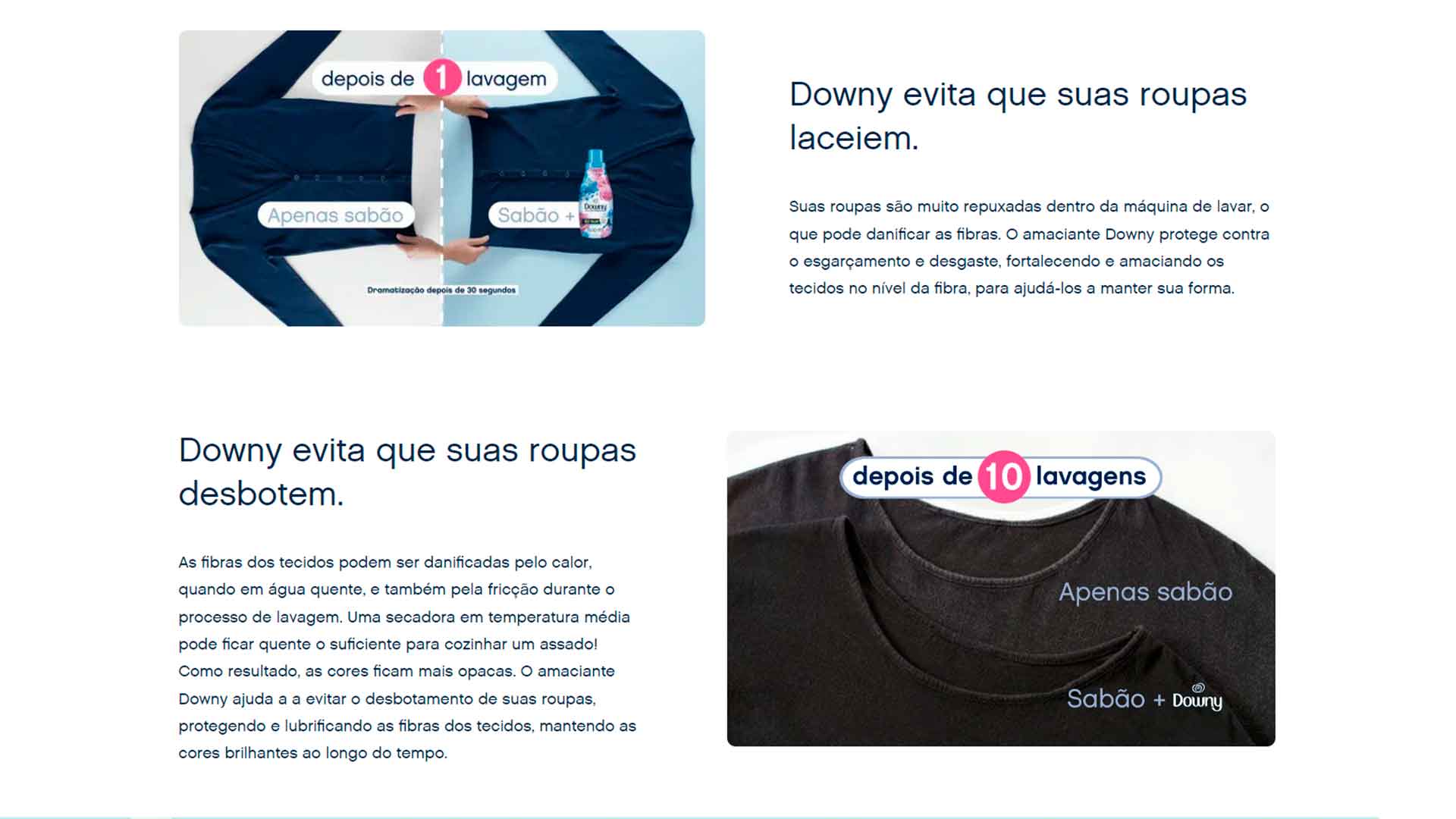Case study
We helped Downy plan and edit website content for their Mexican and Brazilian markets.
Downy had a standard layout already designed in the US and needed to create English content for localization into Mexican Spanish and Brazilian Portuguese.
They needed help vetting a writer, editing their work, and ensuring everything was ready for translation in under 10 days.
We started by creating a proficiency test to vet potential writers, focusing on their ability to write for the web and follow voice guidelines. We reviewed the tests and found the right fit for the project.
Given the tight schedule, we divided the work into daily deliveries, allowing time for one round of feedback and potential rewrites. We scheduled the most tactical content—such as product pages—for the first days, and saved the more strategic sections—like the About and Home pages—for later. This gave the writer time to get comfortable with the voice and tone before tackling the website’s most brand-critical content.
To onboard the writer quickly, we created a document with key voice and formatting guidelines. Documenting these standards helped reduce rewriting and improved collaboration by clarifying how the work would be evaluated.
Thanks to the time invested in finding the right writer, documenting voice guidelines, and building a precise schedule, the project ran smoothly. We delivered high-quality content on time and ready for localization.
Operations exist whether you plan them or not. Without a clear plan and performance standards, a project’s quality depends on silent tradeoffs shaped by each team member’s incentives. And what benefits each part in isolation is rarely what’s best for the whole system.
A ContentOps plan offers a framework for making informed decisions about what content to produce, how it gets made, and who’s responsible for each part. A clear roadmap supports consistent quality, reduces delays and errors, and streamlines collaboration. The result: faster delivery and higher project profitability.

